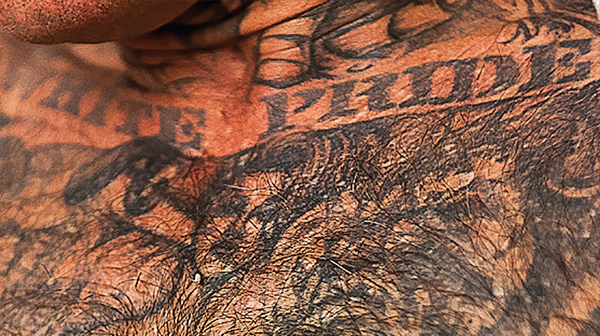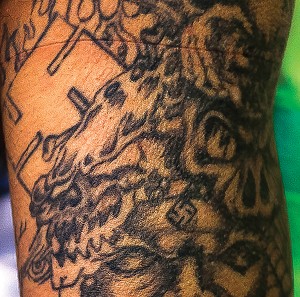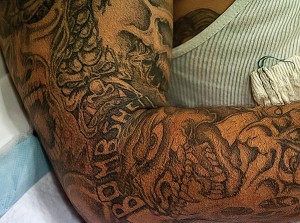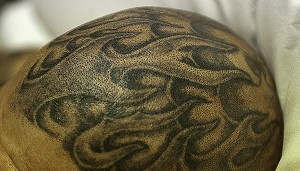
An ED physician connects with a ex-prison inmate-turned-inpatient by photographing his white supremacist tattoos
Except for the staff giving you a heads-up, you never know how your patient encounter will begin or end—either to treat them or, in my case, photograph them. My personality is predictable: I always go in with a smile and a handshake. This approach has allowed me to create some of the most compelling and intense photographs during my 30-plus years in emergency medicine. This instance was no exception.
Explore This Issue
ACEP Now: Vol 33 – No 01 – January 2014 I had no knowledge of my patient’s prior prison history. He recently had been released from jail after being incarcerated from 1993 to January 2012. He was in the emergency department for alleged methamphetamine abuse, which he vehemently denied.
I had no knowledge of my patient’s prior prison history. He recently had been released from jail after being incarcerated from 1993 to January 2012. He was in the emergency department for alleged methamphetamine abuse, which he vehemently denied.
Upon my entering the room, he was not overly aggressive. Little did I know that under his gown (which he had on backward with the opening in the front) were tattoos that dilated my pupils as if I had taken atropine! As I shook his hand and introduced myself, I could not help focusing on the “White Pride” tattoo on his chest and the Aryan Brotherhood swastika prison “tats” emblazoned on both arms.
 Instantly, my personality and training, as well as my being on the Patient Satisfaction Faculty, went into hyperdrive. “What brings you to the emergency room, my brother?” I asked him.
Instantly, my personality and training, as well as my being on the Patient Satisfaction Faculty, went into hyperdrive. “What brings you to the emergency room, my brother?” I asked him.
He looked at me quizzically, paused, and said, “Huh?”
To make a long story short, after I knew he wasn’t going to kill me (ie, he is a paraplegic with a left BKA), I sat down by his bedside. After several minutes and my continued smile to show him I had a sincere and genuine interest in his care, we actually became “friends.” We actually began to talk “prison stuff.” (I had watched Lockup and Gangland, so I knew the jargon.) His story was amazing and intriguing such that I asked my newly found Aryan Brotherhood friend if he would allow me to take photos of his tattoos. He smiled and said, “Sure.”
 As a photojournalist and an emergency physician, my smile-and-a-handshake approach, in itself, can begin to break down cultural and racial differences. Does it always work? No. But in my experience as a photojournalist/emergency physician, while the barriers can be challenging, this technique has allowed me to produce photographs that are captivating and gripping.
As a photojournalist and an emergency physician, my smile-and-a-handshake approach, in itself, can begin to break down cultural and racial differences. Does it always work? No. But in my experience as a photojournalist/emergency physician, while the barriers can be challenging, this technique has allowed me to produce photographs that are captivating and gripping.
Oh, and no staff or physician was hurt during the encounter with my friend!
Pages: 1 2 | Single Page





No Responses to “Photojournalism Helps Break Down Cultural, Racial Differences Between Physician and Patient”